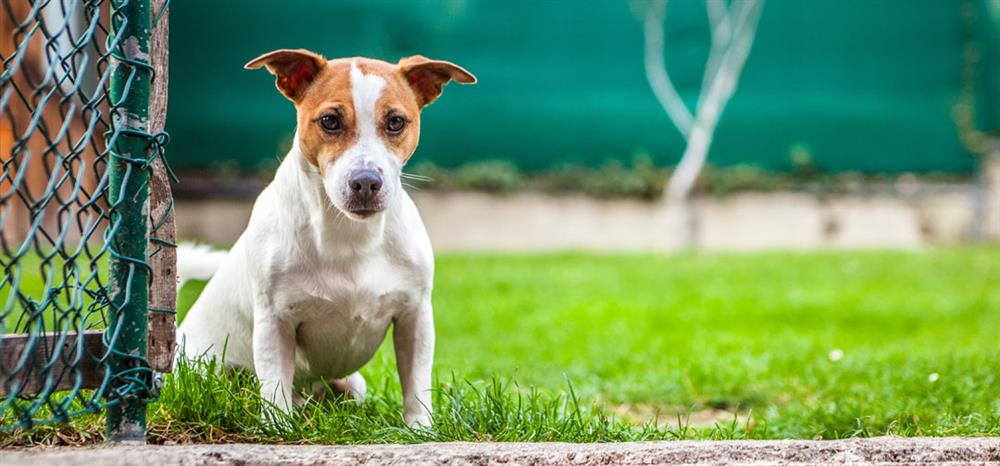
What is Needed When Establishing a New Dog Park?
Furniture Leisure has conducted extensive research across the states to assist project managers and park developers in the creation of fully functionality park. One type of park that has been gaining more traction in today’s lifestyle is the dog park. Within recent years, dog parks have been popping up across the country at a staggering 34% increased rate. This doesn’t seem as surprising our recent studies shows, that 44% of all American families own dogs. To put this in better perspective, there are more American households that own a dog than there are with a child. With the heightened popularity, many cities are budgeting to establish their own local dog parks. This is great news as there are many areas that would benefit from a leash free park to take their pets, whether it be for socialization, health, or bonding. But what exactly is needed when developing a new dog park? Below is a list of some of the things to include in your new dog park, whether it be for safety, necessities, or fun.
Safety
When creating a dog park the safety and well-being of the dogs and their owners is the first priority. There may not be a way to prevent every incident, but certain precautions can be taken to avoid most.
Multiple Enclosures - Dogs are predatorial, territorial animals that can become aggressive when excited, provoked, or scared. Even the tamest dogs can become dangerous in the wrong situation. To avoid a potentially fatal circumstance, it would be safer to include multiple enclosures within the dog park for such categories as small, large, and new dog areas.
If a fight were to ensue, less damage would be done if the combatants were around the same size. Mutual combat gives the owners more time to break up the fight without critical outcomes. However, a small dog would always be outmatched to his bigger opponent. There have been misfortune situations were larger dogs even mistake a smaller dog for a chew toy.
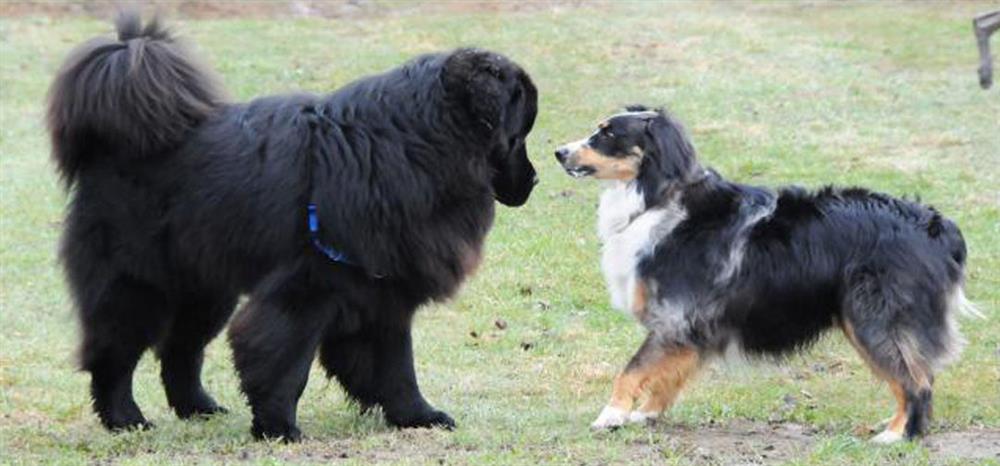
For this reason, it is important to have separate enclosures for small and large dogs. Most dog parks have these sections but go by weight. However, it may be more logical to go by the shoulder height of the dog instead. For example, a Basset Hound and a Siberian Husky have a difference of 1/2 foot in height but share the same weight ranging from 40 to 60 lbs. One of the best policies is to create a shoulder height sign for about 14” tall to enforce the small dog size requirement. Note that the enclosures for small and large dogs should not be equal. The small dog enclosure should be approximately 1/3 the size of the large dog area. Smaller dogs, smaller area.
New dogs can feel thrilled or terrified when entering a new place and may not behave as appropriately as they would at home. Creating a special space that would allow the rookie to become comfortable within his new environment can introduce welcoming results or reveal potential problems. New dog enclosures should share the same fencing as the small and large dog area, so the new dog can interact with the veterans on the other side, without incident. Once the owner feels their dog is ready, they can move into their respective area and enjoy the freedom of the dog park. This enclosure shouldn’t take up much of the dog park, just enough for the largest dog to feel comfortable.
Multiple Entrances – Having just one entry for each enclosure can result in dogs and owners congesting in one spot. This could cause the dog to feel claustrophobic, defensive, or threatened. To avoid this intimidating bottleneck, multiple exits should be established for convenience.
Rules and Regulations – No one likes rules, but no one wants to visit a chaotic dog park either. Rules are made to ensure the safety and happiness of all its guests. Below are common Dog Park Rules that are often used to enforced order in Dog Parks:
- No Food – Dogs can become aggressive and will fight over food.
- No Dogs in Heat – Male dogs can become aggressive. Also, unwanted litters may occur.
- Dogs Must Have Up to Date Vaccinations and Wear Current Tags – This hinders the spread of disease and provides all information needed, encase of incidents.
- Owners Must be in the Enclosure and Have Control of Their Dog At All Times -This ensures all dogs are properly supervised, while they are off the leash. An owner should be close enough to their dog to correct when/if necessary.
- Dogs Who Bark Continuously or Are Aggressive Should Be Removed – For the safety and comfort of all the dogs and their owners.
- Owners are Responsible for Any Injury or Damage Caused by Their Dog – The dog owner of an aggressive dog must cover all damages including veterinarian bills if deemed responsible. A dog owner may also be responsible for the repair of any property damaged by their dog.
- Owners Must Dispose of Pet Waste Immediately in the Appropriate Bins – Promotes a clean environment and avoids the spread of disease.
- Children Must be Supervised at All Times – Some dogs do not like children or strangers in their face. Keep kids in control to keep them safe.
- No More Than 2 Dogs Per Person on Any Single Visit – Each person only has two hands, so they can only control two dogs.
- Puppies 4 months and younger are not permitted - For the protection of the puppy and all the other dogs against certain diseases, such as canine parvovirus.
- Use The Dog Park at Your Own Risk – No matter how many precautions are set in place, incidents can still occur. The owner is putting his safety and safety of his pet at risk from uncertainties.
- Leash Your Dog Before Leaving the Area – This prevents the dog from running off and causing harm to others or to himself.
- Dog Agility Equipment is Not To Be Use To Conduct Business – The agility equipment should be for anyone’s use, not for the use of professional trainers to conduct their business.
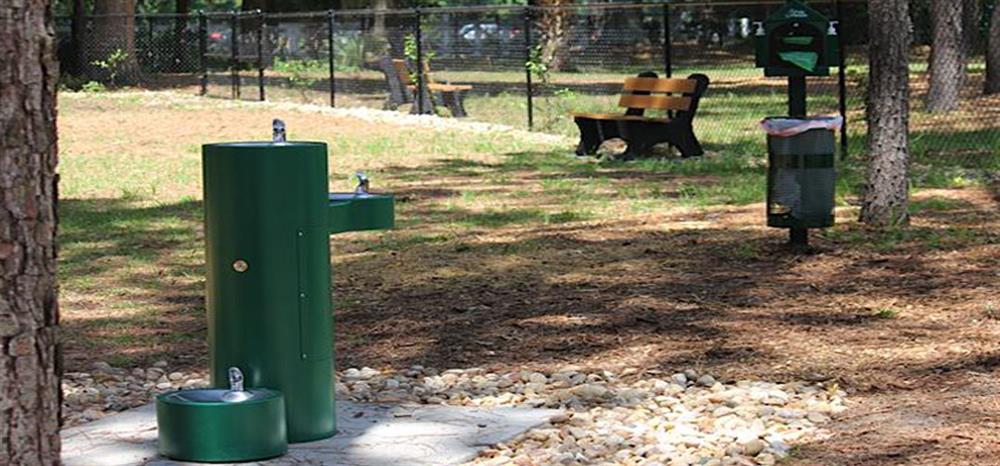
A fenced plot of land is only the beginning of establishing a dog park. There are certain items that need to be included within the grounds to make the dog park more functional.
Doggy Stations – It is critical to keep the grounds free of dog waste. Not only is it good manners, but it helps reduce the risk of diseases and internal parasites. Doggy Stations need to be available and stocked with dog waste bags at all times, throughout the park for owners to clean up after their pets. Multiple stations conveniently placed around the grounds will speed up the process of picking up and disposing of the dog waste. Let’s face it, no one likes to step in poop or even worse, have their dog roll around in it. YUCK!
Shade Structures and Trees – Shade in the dog park, whether natural or artificial, is important for the safety of the visiting pets. Unlike us humans, who sweat all over our bodies, dogs can only sweat in areas not covered in fur, such as the pads of their paws or their nose. They rely more on panting to keep the temperature of their bodies cool. This is done by rapidly taking in cooler air and exhaling their hot puppy breath. However, on a hot sunny day and an overly exhausted pooch, panting may not be enough to keep their cool. This may put them at a dangerous risk of heat stroke that will require immediate treatment. To avoid this whole scenario and keep dogs along with their owners comfortable, shade should be established in designated areas of the park for a pleasant cooldown. Shade trees, such as Oak and Maple, are great for producing significant relief. Artificial shade, such as shade structures, are also an option when big shady trees are absent.
Water Fountains – Another great way to cool down a hot canine is to keep them hydrated with a source of fresh cool water. Water should be available at all times at any park, but more so for a park that has hot dogs running around. Dog water fountains are a great way to provide water to both dogs and their masters. Just like water fountains found at playgrounds, these dog fountains are just a button away from clean refreshing water. These dog fountains feature multiple tiers of water access, so all dogs can reach. They can be quite pricey but are worth the comfort and convenience. Water bowls with an accessible tap should at least be available if nothing else.
Open Areas – Dog parks must have a flat open area in both the small and large dog enclosures. Most people, who visit dog parks do so because they don’t have a yard or big enough yard for their dog to run around in. This allows dogs to run freely, chase each other, and enjoy the grass under their feet. Open areas also give an owner the opportunity to bring a ball or frisbee for a game of fetch for a fun physical activity with their dog.
Shrubs – From their primal instincts, dogs will urinate on certain things to mark their territory. Shrubs and bushes allow them to do their business in more isolated, controlled areas. This may not stop them from going in other places like on fellow owner’s shoes, but it is more impactful. Not to mention bushes and shrubs will look nice throughout the park, even if they are intended as doggie restrooms.
Elevated Fencing – Typically dog park include fencing that is 5-ft in height. However, a large dog filled with pent-up energy can clear a 5-ft. chain link fence with ease, if he sees something interesting on the other side. This could create hazardous situations as dogs in the adjacent areas can be harmed or the escapee can run into a busy road. An 8-ft. chain link fence is highly recommended, if possible, to avoid this type of calamity. It is also important to ensure that the fence goes all the way to the ground, without any possible breaches for smaller dogs to slip through.
Benches or Picnic Tables – Dogs love to socialize and relax, while they enjoy their time at the dog park. This is no different from their owners. By providing benches or picnic tables, people can have a place to put their belongings, rest, and talk to fellow dog owners as their dog pals around.
Parking Spaces - Like any public area, parking accommodations need to be taken into consideration. The size and projected popularity of the dog park will determine the number of spaces needed. Always remember to include handicap spots.
Posted Guidelines and Rules – The safety rules and regulations need to be displayed on robust signs at least on every entrance to the park. Be sure that the information is written with simple, precise verbiage to avoid any confusion. Leaving contact numbers, such as dog park maintenance and the local animal control, can help owners report and rectify incidents quickly. Hours of operation should be clearly posted.
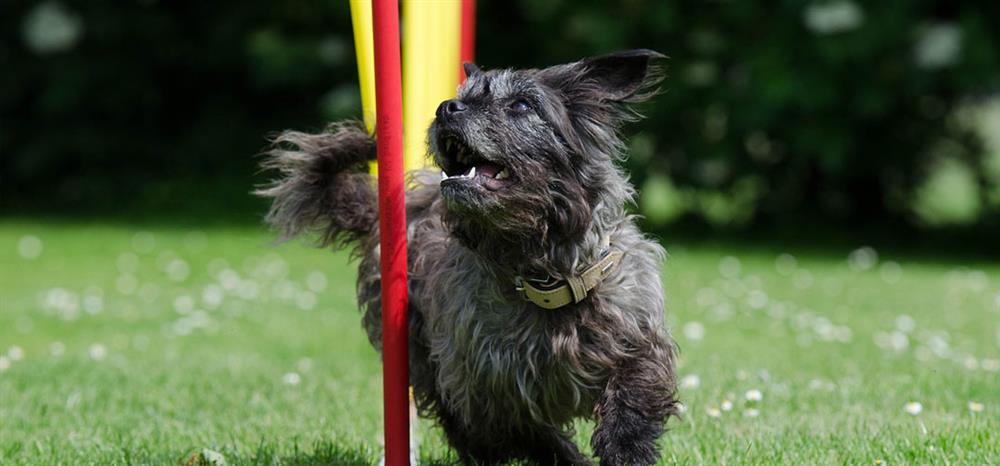
Fun Additions
With all the essential established, it’s time to add the fun features that make the dog park more appealing to dogs and their owners. By adding these extras, the dog park will become a popular social experience for both man and canine.
Agility Equipment – Agility equipment at a dog park is a cost-efficient way that allows dogs to bond with their owners while using their natural instincts. Dogs have thrived for centuries by hunting prey and in doing so had to overcome certain obstacles, such as bobbing and weaving through trees and bushes, climbing rocks, jumping over logs, and digging through bunny burrows all within a small-time frame for a meal. Today, dogs can participate in a different kind of sport that can hone these skills on an obstacle course using equipment like Hurdles, Hoops, Stepping Platforms, Climbers, and Weave Poles. With the guidance of their masters, dogs will navigate through the course with quickness and dexterity. This isn’t only a fun hobby for the dog and master, but a great activity to keep both parties in shape.
Wet and Drying Areas – Most breeds of dog love to play in the water. They enjoy running, pawing, rolling, biting, an all-around having a grand old time getting soaked. Whether it has splash zones or a shallow pool, dog parks with water features tend to be more popular than those that don’t. Wet areas are more expensive to establish and maintain but are worth the cost, especially in warmer climate areas and bigger cities. If a wet area is included in a dog park, a dry area is a necessity as owners don’t want to load up a dripping pooch in their car. Dry areas should be open for sundry with a concrete floor and maybe a hose or shower space to wash off any dirt the dogs may have acquired.
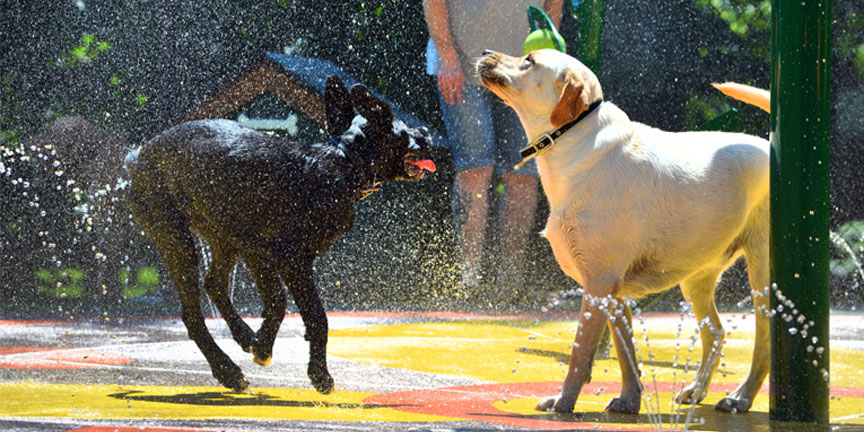
Dirt Areas – Back to primal instincts, many dogs have the urge to dig holes. In the wild, dogs would dig to create a den for their pups, have a place to cool down, hunt for food, or hide food from other predators to dig up and enjoy later. Having a dirt area in the dog park will satisfy the dogs need to dig, which would not otherwise be allowed in the families’ backyard. Make sure the dirt area isn’t next to the fence or that the fence is reinforced with concrete to prevent digging underneath.
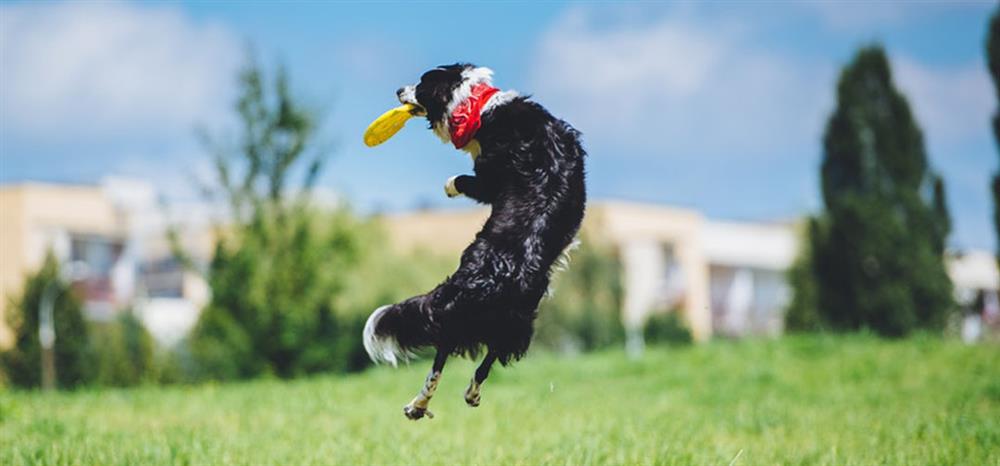 Furniture Leisure is a proud supporter and supplies of dog park amenities. We offer a large variety of Commercial Dog Park Equipment, including pet waste stations, replacement dog waste bags, pet signs, thermoplastic benches, picnic tables, trash receptacles, and dog park agility kits. Give us a call to receive a quantity discount quote and get started on your local dog park today!
Furniture Leisure is a proud supporter and supplies of dog park amenities. We offer a large variety of Commercial Dog Park Equipment, including pet waste stations, replacement dog waste bags, pet signs, thermoplastic benches, picnic tables, trash receptacles, and dog park agility kits. Give us a call to receive a quantity discount quote and get started on your local dog park today!
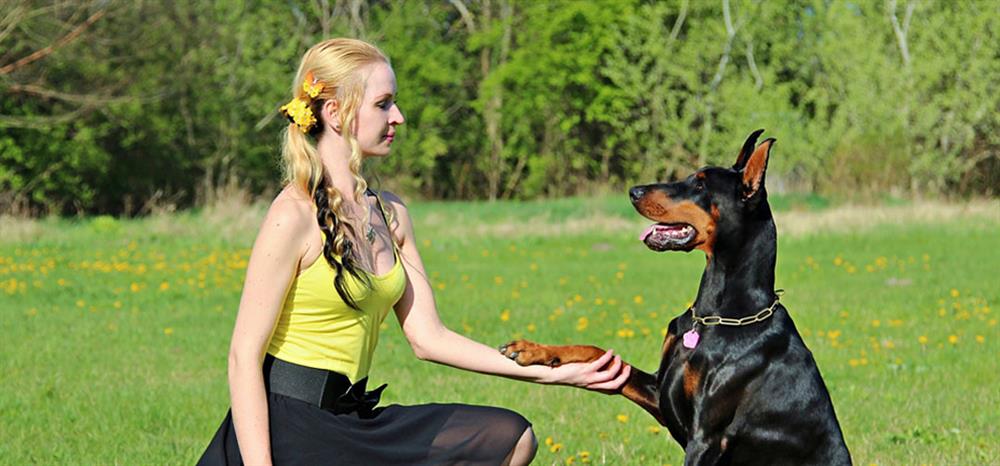


















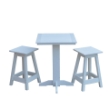





























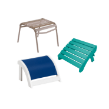





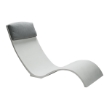







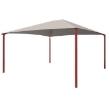
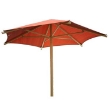
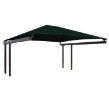
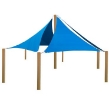
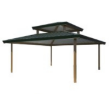
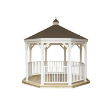
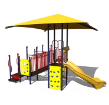











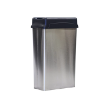




























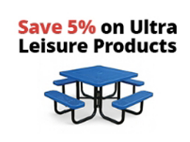
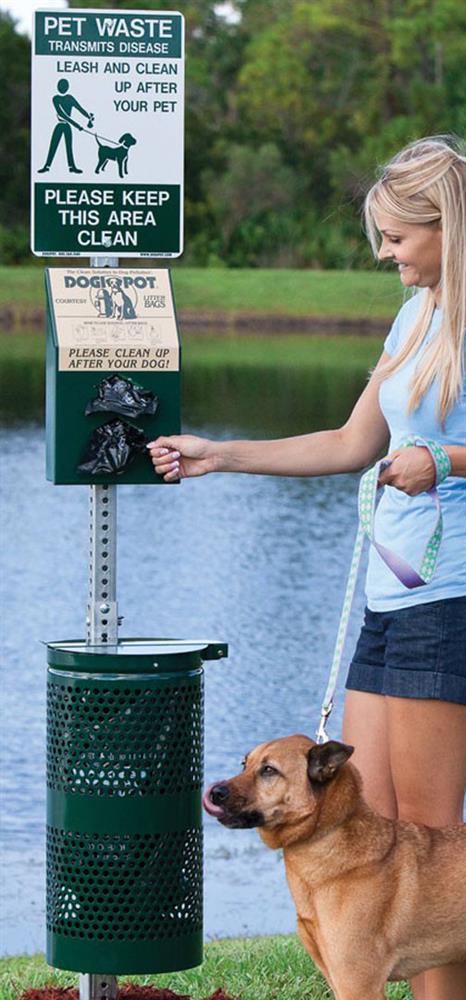
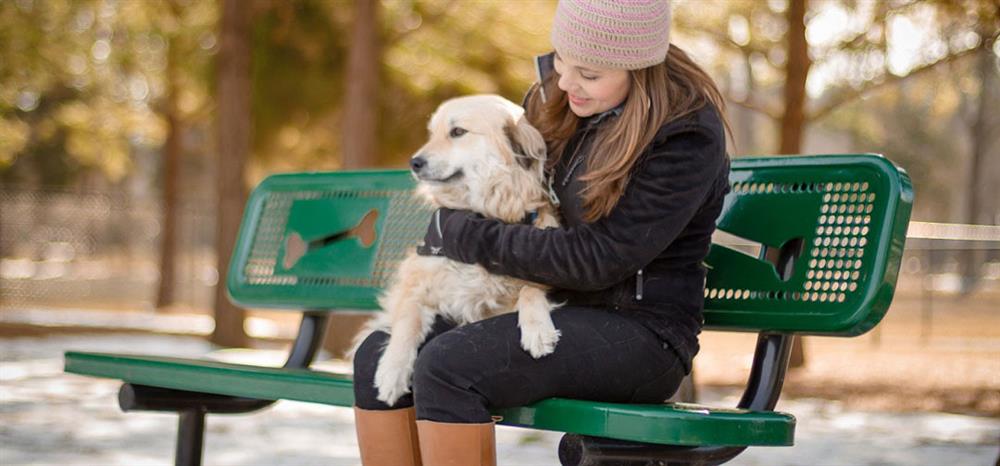
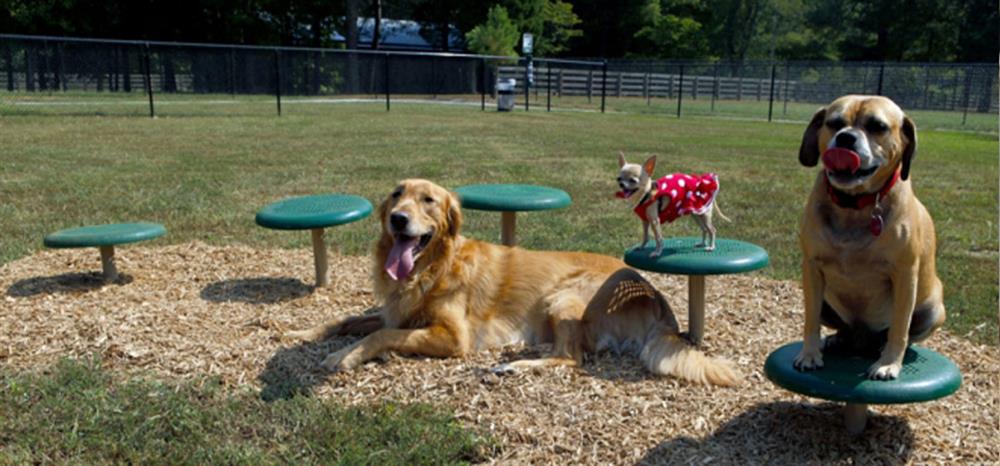



Leave your comment